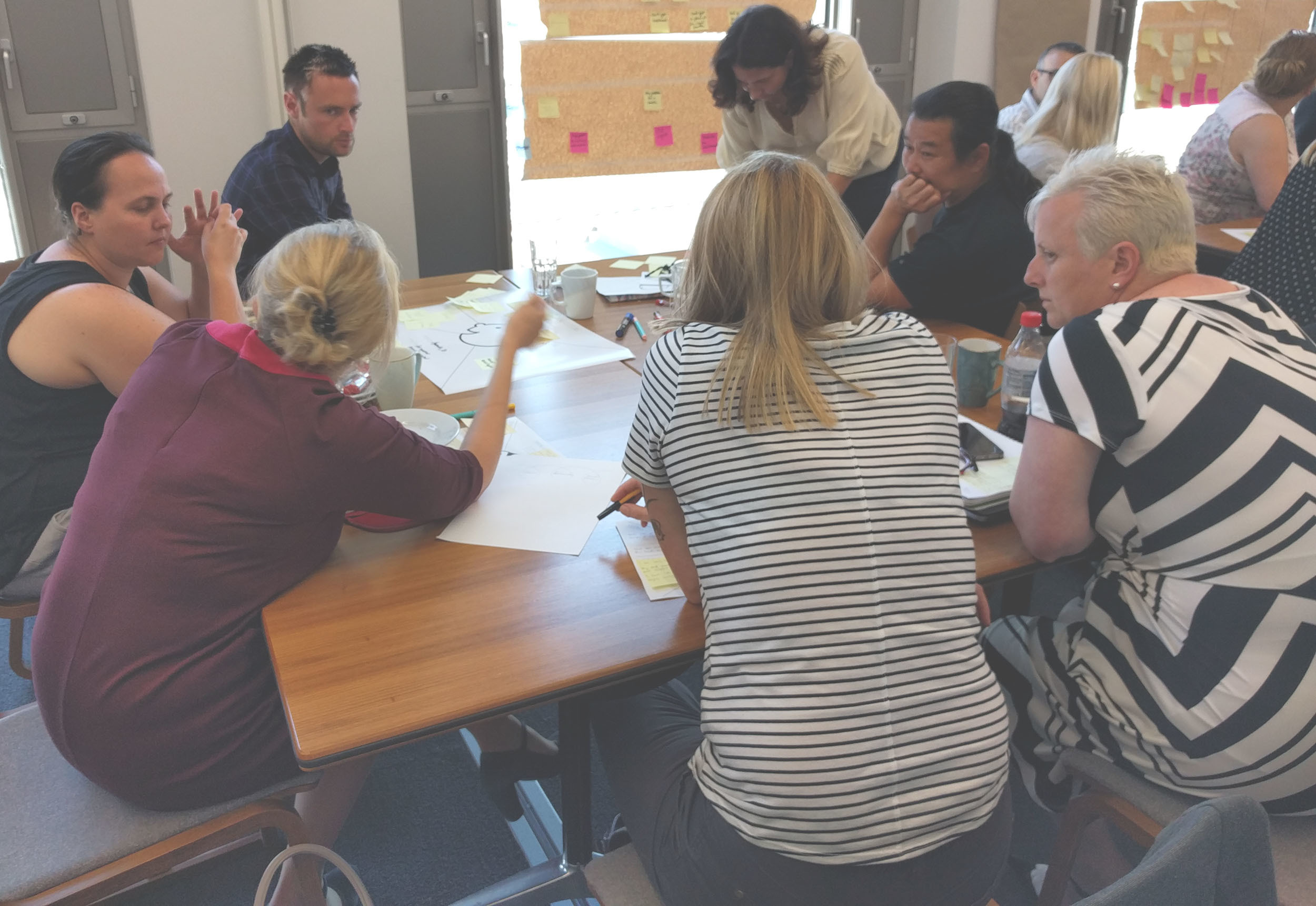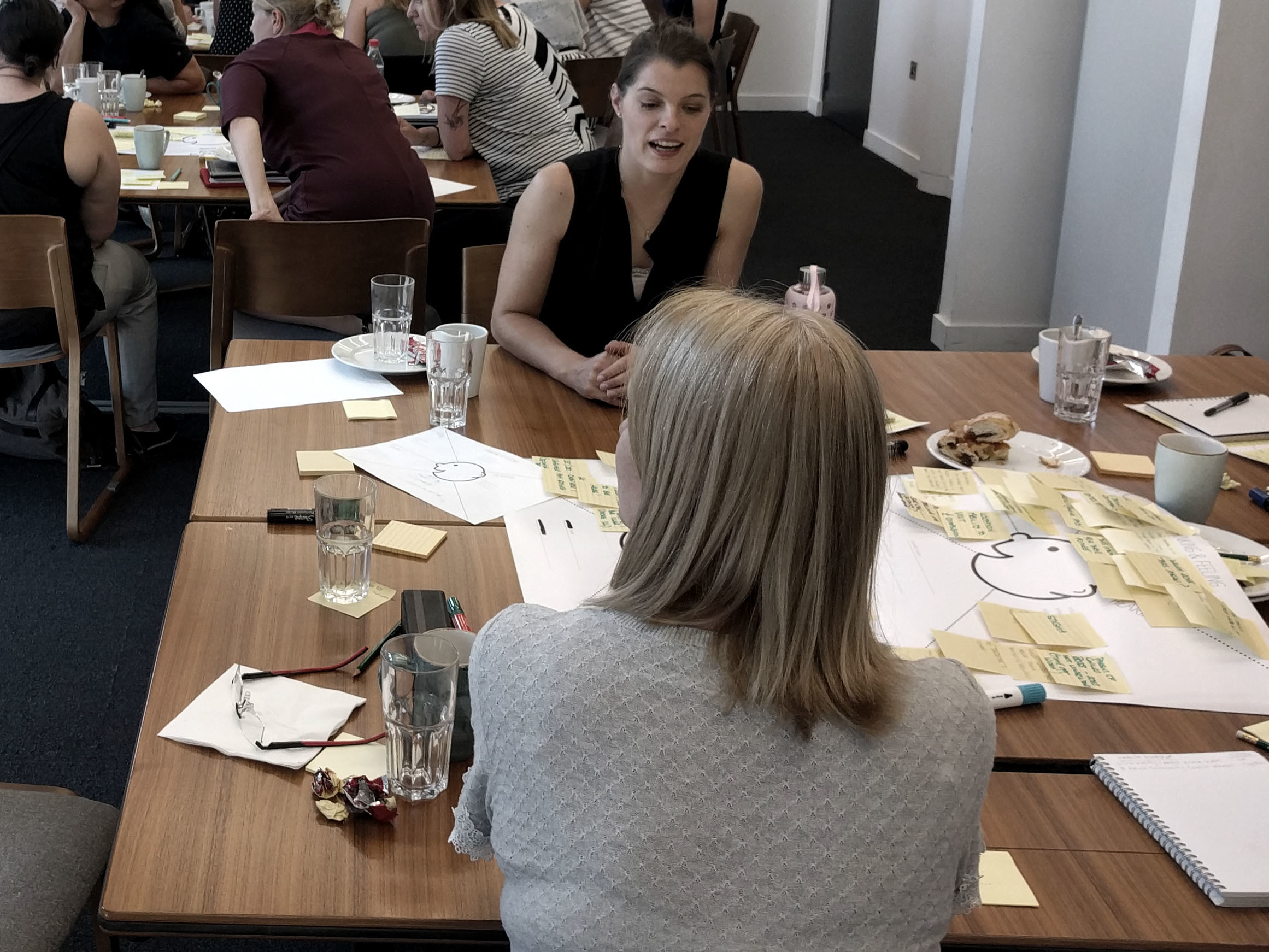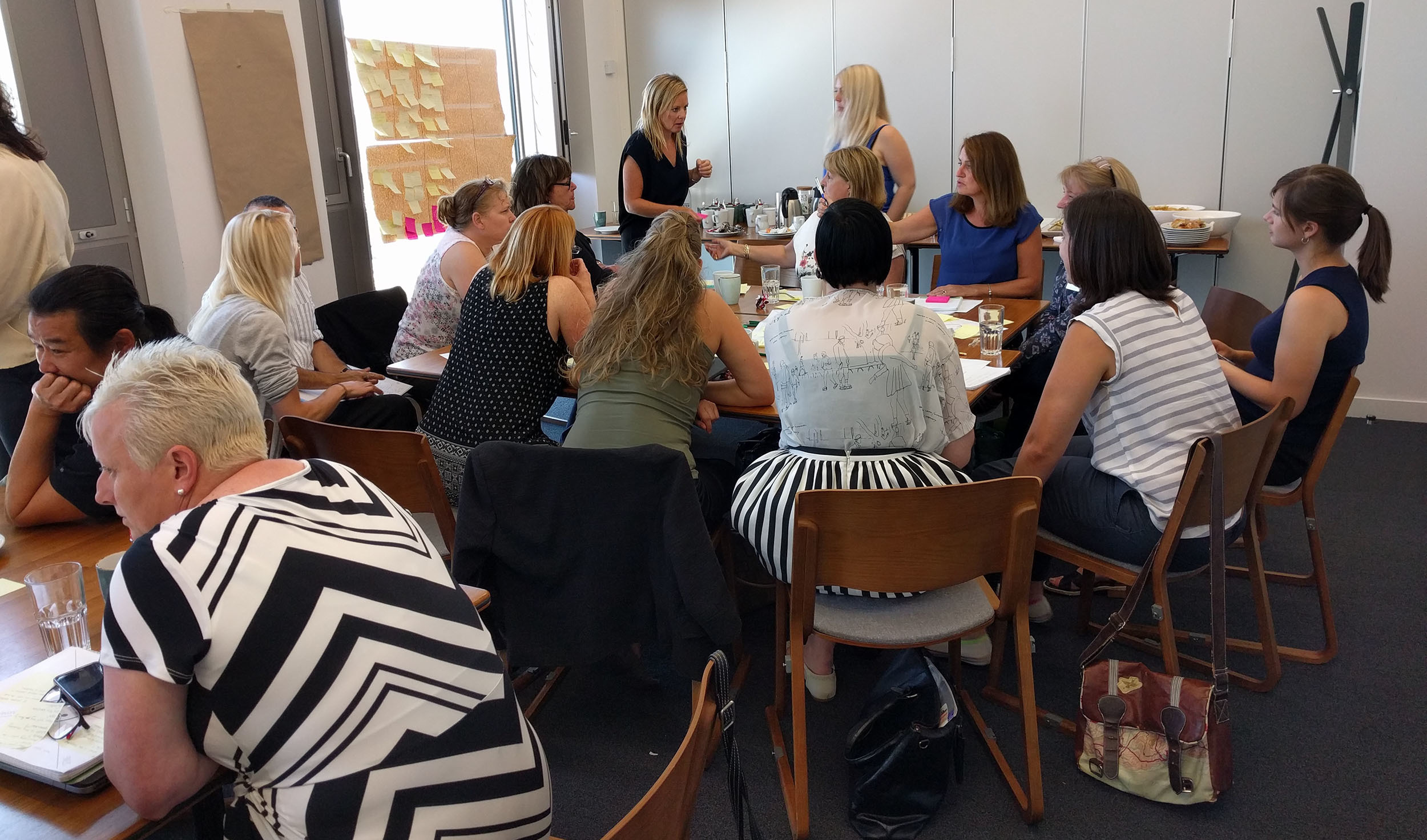The Challenge
The Huntercombe Group is responsible for over 20 hospitals in the UK that specialise in the rehabilitation and support of young adults and adults with mental health issues varying from brain injuries, depression and learning difficulties. Although a private organisation, residents are found purely through NHS referral that is not voluntary for the patient.
Empathy and customer experience mapping
We ran a full day workshop with 30 people from across the organisation. These included administrators, human resources, ward nurses, carers, psychologists, doctors, marketers, directors, hospital managers, and operations director from across all 20 facilities.
Their function was to share their stories, and to describe the people they interact with every day in order to create a shared understanding of who the website might be for, their needs, fears, and goals.

The objective was to change the way stakeholders thought about the function of their site; primarily an assumption that they were appealing to patients, professionals, and future talent all in one place and that the information they wanted should be separate.
The workshop provided enough data to conduct further research into information architecture and the end result - a prototype and visual language for site redevelopment & print materials - creating a clear service design strategy for information and guidance content.

What happened next?
The C-Suite teams at Huntercombe’ gained a new perspective on who their digital services are for, enabling them to focus their efforts in the right places and to only produce content that benefits their core audience.
With a clear content strategy the marketing team were able to engage with third parties to produce videos that tell real stories about the impact their services have on the lives of patients and their families.
During the define and design stages we worked with the project team to introduce the concepts of modular and atomic design practices in order to deliver content types instead of page designs.
Once the picture became clear for the team they were instantly excited by the freedom that this way of thinking provides and confident in their ability to create new page types and content types from a pattern library.
In February 2017 the team released the next iteration of their site, a dramatic departure from where they started. We’ll be working with them over the coming months to evaluate its effectiveness towards their goals.
